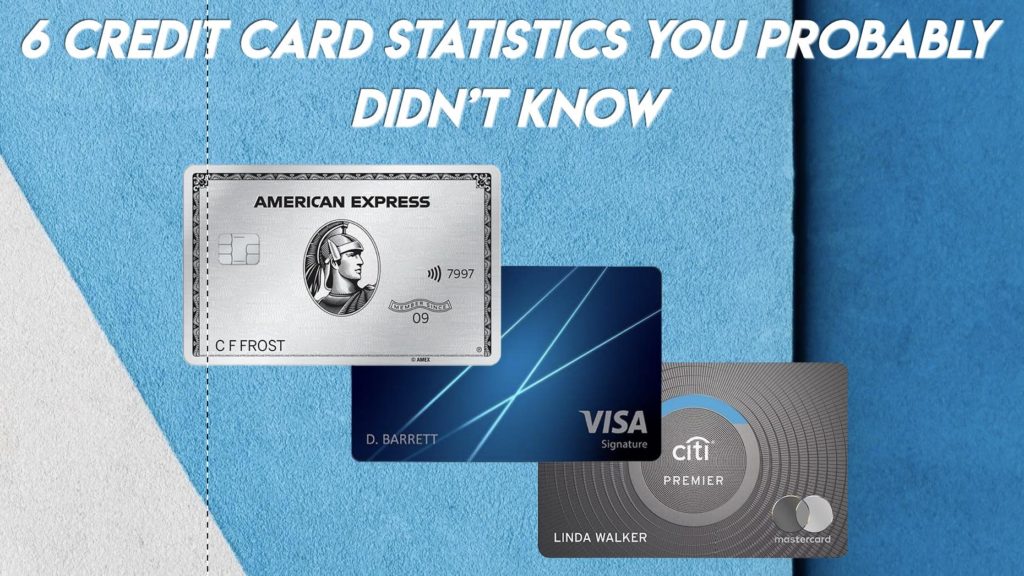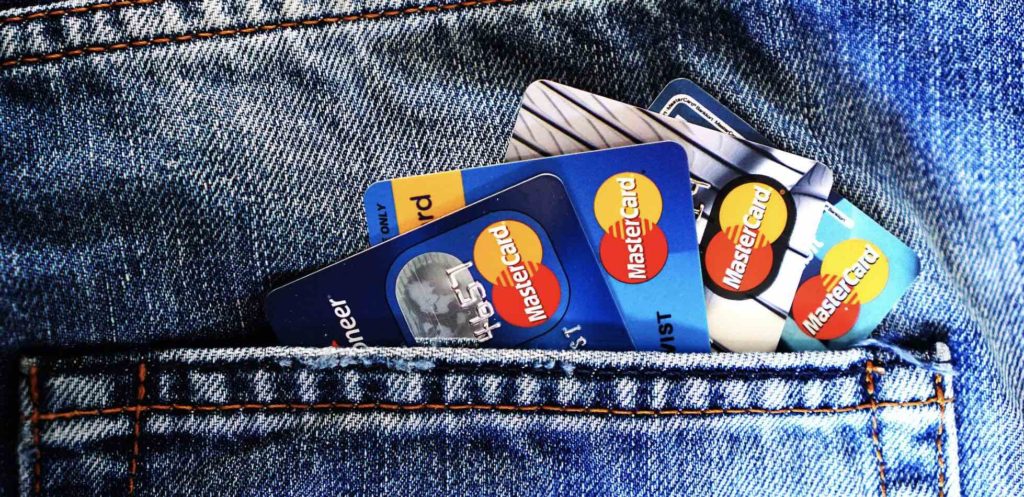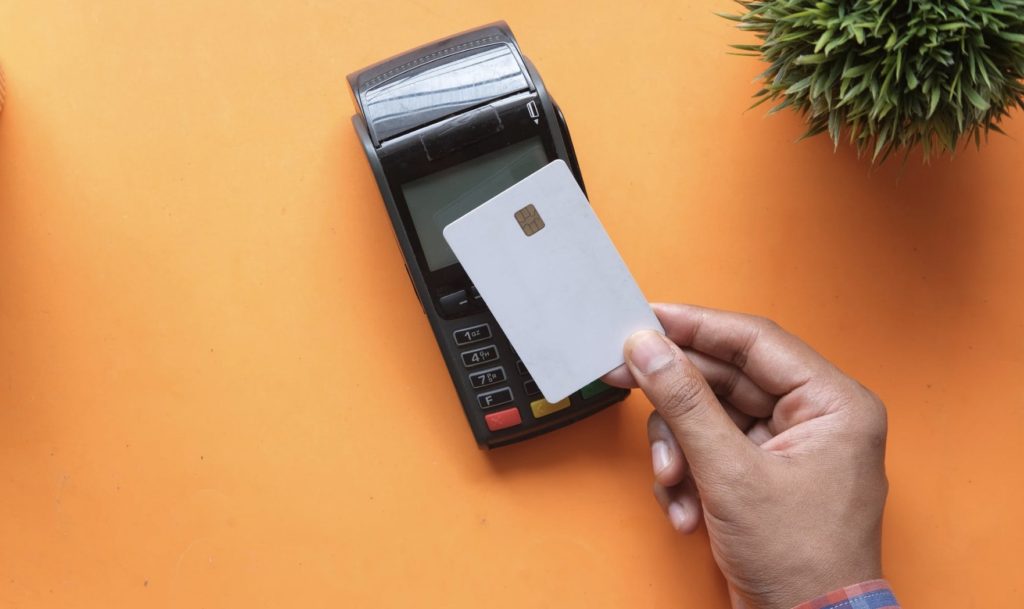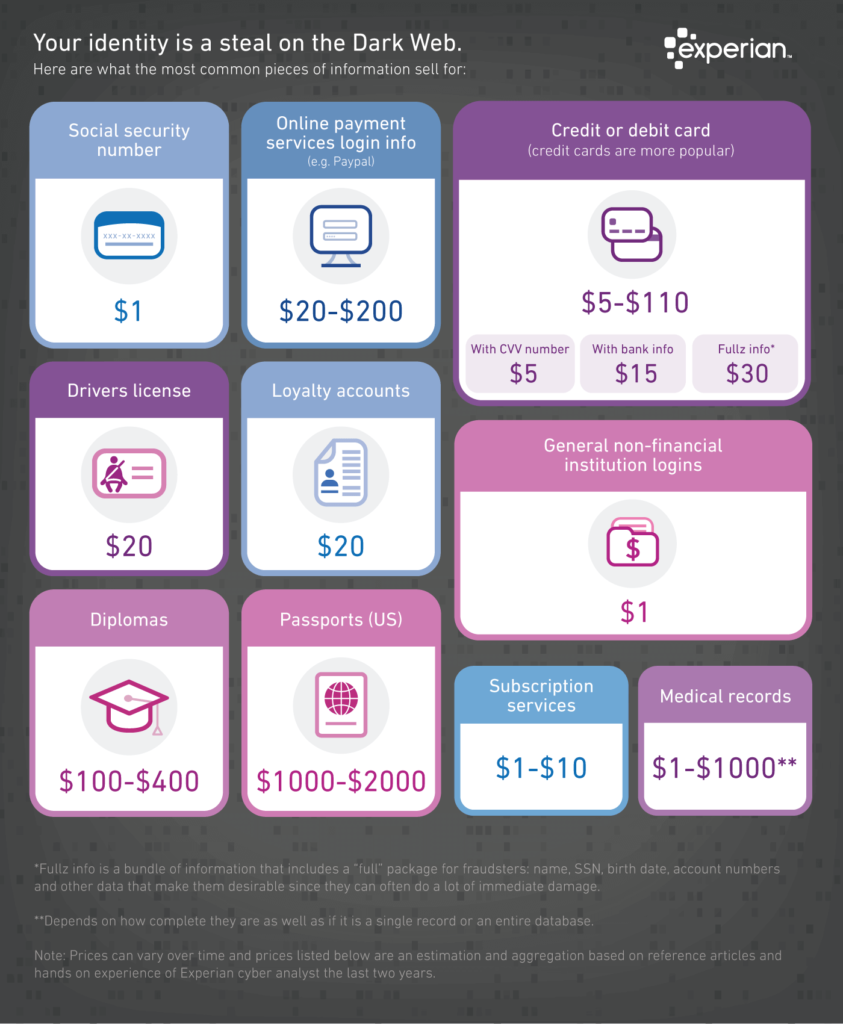by Daniel | Last Updated July 13th, 2022

We may earn a commission for purchases using our links, at no cost to you.
With Credit cards being such a common item in our lives and wallets, do you ever sit back and wonder how much money credit card companies make? or how many people actually carry a balance on their credit cards?
Well, I for one defiantly had a lot of questions before I did the research for this article, and I found out some pretty eye-opening facts about the credit card industry.
So I hope you enjoy this article and maybe I can provide you with some interesting information that you may not have known before.
1. What Is the Average Credit Score in the U.S?
Now let’s start with a pretty important point part of how you actually get approved for a credit card, mortgage, or auto loan which is your Credit Score.
And this will be used to determine what your creditworthiness is and if you are suitable to receive either loan, mortgage, or credit card.
So according to Experian, over the past 10 years, the average credit score in the United States has actually increased from a low of 689 in 2011 up to 714 by September of 2021.
Then if you look at where that sits on the FICO score it is considered to be a “Good” score.
So the lowest average credit score was in Mississippi with an average score of 681 and the highest average credit score was in Minnesota with an average of 742.
Now the reason it is so important to have a good credit score is that it can save you quite a lot of money.
Generally speaking, the higher your credit score is the more likely it is that you will be able to secure a lower interest rate if you need to borrow money for a car or home loan.
Also, banks and lenders will be more likely to consider you as a client if you have a higher credit score, as it is less likely that you will default on your payments.
And If you want to learn more about how you can increase your credit score now, check out this video here where I take you through the process of how to increase your credit score in 30 days.
2. What Is The Most Popular Type Of Credit Card?
Now of all the different types of credit card companies that offer credit cards Visa is clearly the most popular and has the largest market share of the four major Credit Card Networks in the US.
By the end of September 2020, there were approximately 343 million Visa Credit cards in use in the US.
And in the same period, Visa reported that its credit payments volume was $1.97 trillion.
Mastercard comes in second with approximately 249 million Mastercards in use in the US and a credit payments volume of approximately $837 billion.
And this gives Visa and Mastercard a large portion of the credit card market in the US with over 75% of total spending purchases made with their cards
American Express is next with approximately 53.8 million Amex cards in use in the US at the end of 2020, they also had a purchase volume of $693 billion.
And for interest’s sake, the average spend on an Amex Card in the US in 2020 was $18,090.
Finally, Discover had approximately 59.80 million cards in circulation and had a purchase volume of $148 billion in 2020.
3. How Many Credit Cards Does The Average American Have?
Now another interesting fact about credit cards is just how many the average American has.
And according to Experian Americans held an average of 3.84 credit cards.
With New Jersey taking the top spot with an average of 4.54 credit card accounts, and Alaska at the bottom with 3.06 credit card accounts.

Then in terms of which age group held credit cards, 18-23 year olds had the least amount of accounts with an average of just .91 credit cards, whereas 56-74 year olds held the most credit cards with an average of 4.61 cards.
Now according to a survey by the Federal Reserve, 83% of adults in the US had a credit card in 2020 with half of these people actually carrying a balance over from month to month.
Then when it comes to income more than 98% of people with an income of more than $100,000 had a credit card and then at the lower income level of $25,000, just 56% of people had a credit card.
And interestingly enough, having more than one credit card can quite often be an advantage.
Seeing as you will have more available credit, it will be easier to keep your credit utilization lower (preferably under 30%), which will help to increase your credit score.
4. How Much Credit Card Debt Do Americans Have?
Now let’s take a look at how much debt the average American has.
And for the first quarter of 2022, Americans had a total credit card debt of $841 Billion dollars, which is a lot of money.
In comparison, back in 1999 Credit card debt in the US was $478 billion, almost half as much as it is today.
And according to Lendningtree.com, New Jersey has the most credit card debt in America with an average of $7,872 debt, and I guess this makes some sense as New Jersey also has the most credit card per person on average in the US.
Then the State with the least amount of debt is Kentucky with an average of $5,441 of debt.
Now according to Experian, men tend to carry more debt than women, with an average of $125 more, and women tend to open more credit card accounts than men, with an average of 4.5 credit cards, compared to men with an average of 3.6 cards.
5. How Much Money Do Credit Card Companies Actually Make?
So one question that I always ask myself is, how much money do these credit card companies actually make?

Well, in 2020 credit card companies made approximately $176 billion.
And surprisingly enough Interest income was the biggest earner for most companies.
Basically, interest income is earned by the lenders when their customers carry over a balance and then pay interest that is due.
So in 2020 of the $176 billion in income reported by credit card companies, $76 billion of that was directly from Interest.
Now there are also quite a lot of other ways that credit card companies can make money from their customers.
One of the more obvious ways is the annual fee that they charge for their more exclusive credit cards.
And whilst some high-fee credit cards offer some fantastic benefits and user perks, it’s always worth considering if those benefits will be of value to you.
Now the second largest earner for lenders is Interchange Income, and this is the fee that a merchant is charged when a transaction takes place through their business.
And these fees vary quite a bit, for Visa and Mastercard it can start as low as 1.15% and go up to 2.40%, whereas with American Express it can start around 1.43% and go up to 3.30%, which is quite a lot more when you think about it.
In 2020 the credit card industry reported an income of $51 billion just from interchange income.
Some other ways they make money include:
- Penalty fees
- Cash Advance fees
- Balance Transfer fees
- Interest Income (mentioned before)
6. Credit Card Fraud Statistics
Now finally, let’s take a look at some of the credit card fraud statistics, which are pretty alarming.
So according to a research paper by Atlas VPN, credit card fraud increased from 17,236 reports in early 2015 to a staggering 45,120 reports in early 2020.
And according to a Nilson Report, the United States has the highest number of cases of credit card fraud in the world, with California and Georgia having the most cases in the country.
All up this cost Americans approximately $9.47 billion in illegal transactions just in 2018.
The most common form of credit card fraud originates from online shopping which is also referred to as a Card-Not-Present or CNP transaction.

And a large majority of the people who reported losing money were aged between 20-29.
So it’s always important to check any charges that are made to your credit card, as fraudulent charges clearly happen on a regular basis.
The best thing to do is to call your credit card issuer as soon as possible and dispute any fraudulent charges that may show up on your account.
Also, according to Experian, it is relatively easy for thieves to steal your credit card data from the dark web.
And the scary thing is that it is not even expensive for them to get hold of your information.
As you can see in this chart (below) thieves can purchase information to a credit card including the CVV number for as little as $5.

A good way to combat this and have peace of mind is the enroll in an identity theft monitoring service like ‘LifeLock’ by Norton or ‘IdentityWorks’ by Experian
Both of these services can monitor and alert you of any potential credit card or identity theft.
And at least with Experian, you can get a 30-day free trial here to see if it’s right for you.
Final thoughts
So all in all there are some pretty interesting statistics about credit cards.
There is a lot more credit card fraud than I initially thought there was, which is a little worrying.
Also, the amount of credit card consumers that actually carry a balance over each month is quite surprising and results in an unbelievable amount of profit for the credit card companies.
Now If you’d like to learn more about common credit card mistakes, why not check out this article here, where I talk about 9 Credit Card Mistakes That You Should Avoid At All Costs.
